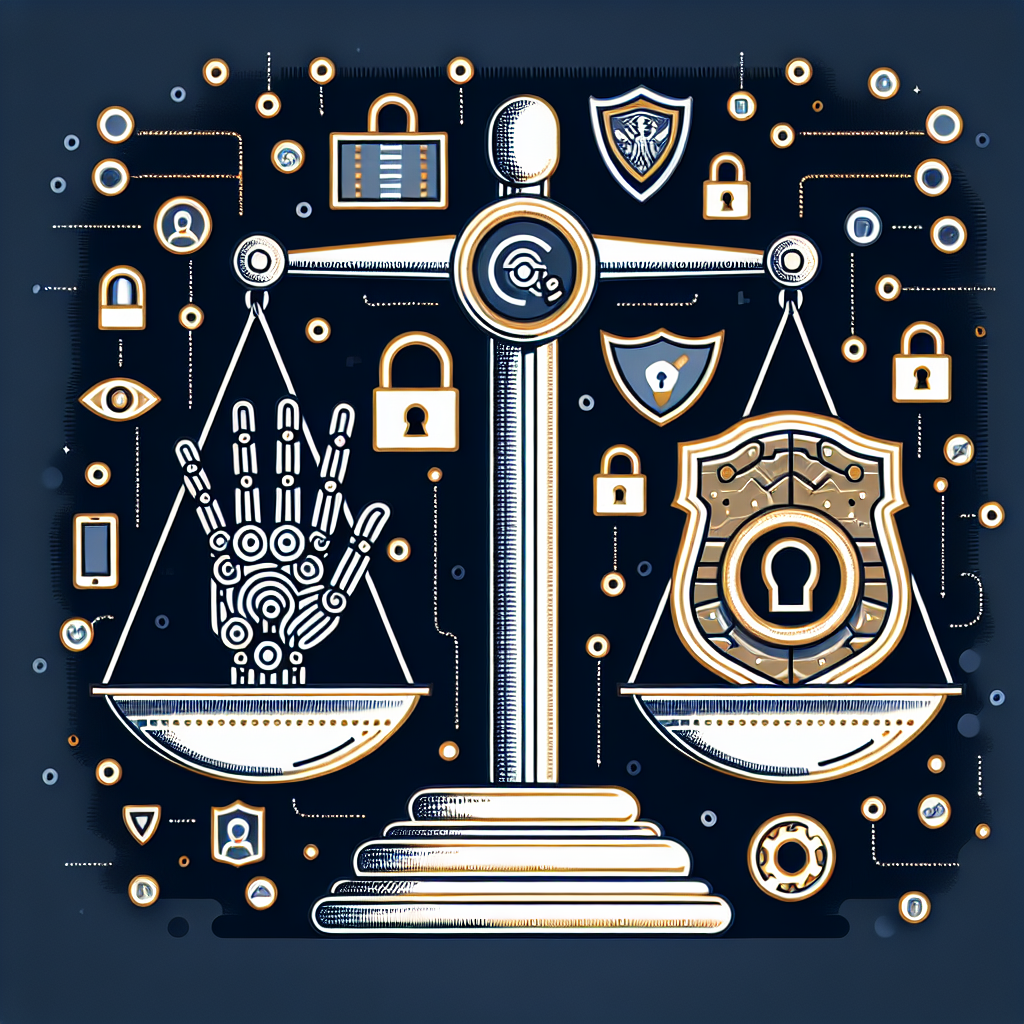Artificial Intelligence (AI) has been increasingly integrated into various industries, including law enforcement. The use of AI in law enforcement has the potential to revolutionize the way crimes are prevented, investigated, and solved. However, the use of AI in law enforcement also raises concerns about privacy and security. Balancing the benefits of AI with the protection of individual rights is crucial in ensuring a fair and just criminal justice system.
The integration of AI in law enforcement has led to the development of various technologies that help police departments and other law enforcement agencies to enhance their capabilities. Some of the most common uses of AI in law enforcement include predictive policing, facial recognition, and video analysis.
Predictive policing uses AI algorithms to analyze historical crime data and predict where crimes are likely to occur in the future. Police departments can use this information to allocate resources more effectively and prevent crimes before they happen. However, there are concerns about bias in predictive policing algorithms, as they may disproportionately target minority communities.
Facial recognition technology is another common use of AI in law enforcement. This technology allows law enforcement agencies to quickly identify suspects in crowds or track individuals in real-time. While facial recognition can be a powerful tool for solving crimes, there are concerns about privacy violations and the potential for misuse of this technology.
Video analysis is another area where AI is revolutionizing law enforcement. AI algorithms can analyze vast amounts of video footage to identify patterns, track suspects, and gather evidence. This technology can help law enforcement agencies solve crimes more quickly and efficiently. However, there are concerns about the accuracy of video analysis algorithms and the potential for false positives.
While the use of AI in law enforcement has the potential to improve public safety and enhance the efficiency of criminal investigations, it also raises important questions about privacy and security. As AI technologies become more advanced, it is essential to establish clear guidelines and regulations to ensure that they are used ethically and responsibly.
Balancing privacy and security in the use of AI in law enforcement requires a careful consideration of individual rights and the need to protect public safety. Law enforcement agencies must be transparent about the use of AI technologies and ensure that they are used in a manner that respects the rights of all individuals.
One way to address the concerns about privacy and security in the use of AI in law enforcement is to establish clear guidelines for the collection and use of data. Law enforcement agencies should be transparent about the types of data they collect, how it is used, and how it is protected. Individuals should have the right to know what information is being collected about them and have the ability to opt-out of data collection if they choose.
Another important consideration in balancing privacy and security in the use of AI in law enforcement is ensuring that the algorithms used are fair and unbiased. Bias in AI algorithms can lead to discriminatory outcomes and undermine the credibility of law enforcement actions. It is essential to regularly audit and test AI algorithms to ensure that they are free from bias and produce accurate results.
Additionally, law enforcement agencies should establish clear protocols for the use of AI technologies, including guidelines for data retention, sharing, and deletion. It is essential to have robust data protection measures in place to prevent unauthorized access to sensitive information and protect individual privacy.
In conclusion, the use of AI in law enforcement has the potential to transform the way crimes are prevented and solved. However, it is essential to balance the benefits of AI with the protection of individual rights. By establishing clear guidelines for the use of AI technologies, ensuring fair and unbiased algorithms, and protecting data privacy, law enforcement agencies can harness the power of AI while upholding the principles of justice and fairness.
FAQs:
1. What are some common uses of AI in law enforcement?
Some common uses of AI in law enforcement include predictive policing, facial recognition, and video analysis.
2. What are the concerns about the use of AI in law enforcement?
Some of the concerns about the use of AI in law enforcement include privacy violations, bias in algorithms, and the potential for misuse of technology.
3. How can law enforcement agencies balance privacy and security in the use of AI?
Law enforcement agencies can balance privacy and security by establishing clear guidelines for data collection and use, ensuring fair and unbiased algorithms, and protecting data privacy.
4. What are some best practices for the use of AI in law enforcement?
Some best practices for the use of AI in law enforcement include transparency in data collection and use, regular auditing of algorithms for bias, and robust data protection measures.
5. How can individuals protect their privacy in the age of AI in law enforcement?
Individuals can protect their privacy by being informed about the types of data being collected about them, exercising their right to opt-out of data collection, and advocating for strong data protection measures.

